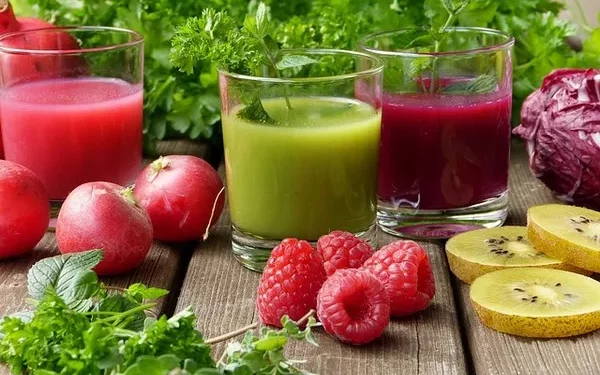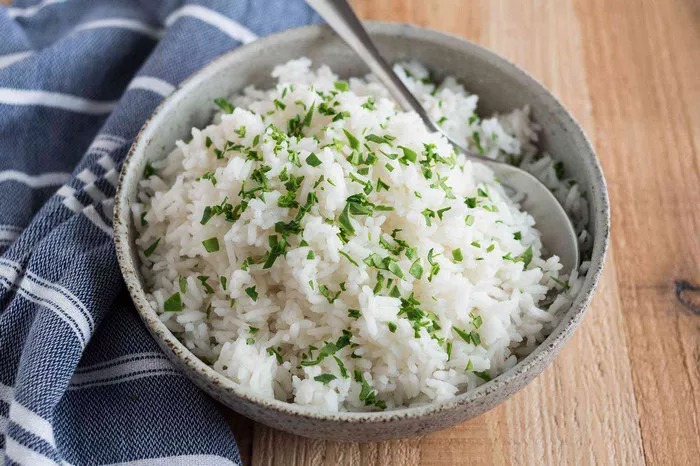Prediabetes is a condition where blood sugar levels are higher than normal but not yet high enough to be classified as Type 2 diabetes. It serves as an early warning sign and provides a crucial opportunity for lifestyle modifications to prevent the progression into full-blown diabetes. One of the most significant lifestyle factors that can impact blood sugar levels is diet, especially the types of carbohydrates consumed.
Among carbohydrates, fruits have long been debated due to their natural sugar content. However, many fruits offer a range of health benefits and are rich in fiber, vitamins, and antioxidants, which are essential in managing blood sugar levels. The key is to choose fruits that have a low glycemic index (GI) and are rich in fiber, which help to moderate blood sugar spikes.
In this article, we will discuss some of the best fruits for individuals with prediabetes, taking into account their glycemic index, fiber content, and overall nutritional profile. By understanding the relationship between blood sugar and fruits, you can make better food choices and improve your overall health.
What Is the Glycemic Index (GI)?
The glycemic index is a ranking of how quickly a carbohydrate-containing food raises blood sugar levels after consumption. Foods with a high GI cause rapid spikes in blood sugar, while those with a low GI release sugar more slowly into the bloodstream. Low-GI foods are generally preferred for individuals with prediabetes because they help maintain more stable blood sugar levels.
A GI of 55 or less is considered low, 56-69 is medium, and 70 or more is high. When selecting fruits for prediabetes, it’s beneficial to prioritize those with a lower glycemic index. However, it’s also important to note that the overall carbohydrate content, fiber, and portion sizes matter as well.
The Role of Fiber in Blood Sugar Regulation
Fiber plays a crucial role in controlling blood sugar levels. It slows down the digestion and absorption of carbohydrates, which can prevent spikes in blood sugar. Additionally, fiber can help improve insulin sensitivity, making the body more efficient at utilizing glucose.
Fruits that are high in fiber are especially beneficial for people with prediabetes. These fruits often have a lower glycemic index and a more gradual impact on blood sugar levels. When considering fruit choices, it’s important to focus on options that are rich in fiber, as well as other beneficial nutrients.
Best Fruits for Prediabetes
Berries (Strawberries, Blueberries, Blackberries, Raspberries)
Glycemic Index (GI): Low (GI ranges from 25 to 53 depending on the type of berry)
Berries are among the best fruit choices for individuals with prediabetes. They are packed with fiber, antioxidants, and vitamins while having a low glycemic index. The combination of fiber and antioxidants in berries helps slow down the absorption of sugars and reduce oxidative stress—both important factors in managing prediabetes.
Strawberries: With a GI of 40, strawberries are rich in vitamin C, manganese, and folate. They are also high in antioxidants, particularly anthocyanins, which have anti-inflammatory properties and may improve insulin sensitivity.
Blueberries: Blueberries are known for their high levels of antioxidants, specifically flavonoids, which have been shown to improve insulin resistance and lower inflammation. Their GI is around 53, making them a suitable option for prediabetes.
Blackberries: Blackberries are not only delicious but also high in fiber and vitamin K. They have a GI of around 43 and are packed with vitamin C and manganese.
Raspberries: With a GI of 32, raspberries are one of the lowest GI fruits. They are also a good source of fiber, providing about 8 grams of fiber per cup, which is excellent for blood sugar control.
How to Incorporate:
Enjoy berries on their own as a snack.
Add them to Greek yogurt or a smoothie.
Use them as a topping for whole-grain oatmeal or chia pudding.
Apples
Glycemic Index (GI): Low (GI around 38)
Apples are an excellent choice for people with prediabetes due to their low glycemic index and high fiber content. The fiber in apples, specifically pectin, helps regulate blood sugar levels by slowing the absorption of glucose into the bloodstream. Apples also have a high water content, which can help with hydration.
Apples are rich in antioxidants, including flavonoids, which may help reduce inflammation and oxidative stress, two factors that are often elevated in individuals with prediabetes.
How to Incorporate:
Enjoy apples as a snack with a handful of nuts for added protein and healthy fats.
Slice apples into salads or top them with almond butter.
Add chopped apples to oatmeal or whole-grain baked goods.
Pears
Glycemic Index (GI): Low (GI around 38)
Pears, like apples, are another great low-GI fruit option. They are rich in soluble fiber, which can help manage blood sugar levels and improve overall gut health. Pears are also an excellent source of vitamin C and potassium, both of which are important for maintaining healthy blood pressure levels.
Studies have shown that people who regularly consume pears have improved glycemic control and lower fasting blood sugar levels.
How to Incorporate:
Pears make a delicious snack on their own.
Add slices of pear to salads or pair with cheese.
Bake pears with cinnamon and a sprinkle of nutmeg for a low-sugar dessert.
Citrus Fruits (Oranges, Grapefruit, Lemons, Limes)
Glycemic Index (GI): Low (GI ranges from 30 to 52)
Citrus fruits are another excellent choice for prediabetes due to their low glycemic index and high vitamin C content. Vitamin C is a powerful antioxidant that may help reduce inflammation and improve blood sugar regulation. Additionally, citrus fruits are a great source of fiber, which helps slow the digestion of carbohydrates and prevents blood sugar spikes.
Oranges: Oranges have a GI of around 40 and provide a substantial amount of fiber, which can help prevent blood sugar spikes. They are also rich in flavonoids that may improve insulin sensitivity.
Grapefruit: With a GI of 25, grapefruit is an excellent choice for those managing prediabetes. It has been shown to lower blood sugar levels and improve insulin sensitivity.
Lemons and Limes: While these fruits are not typically eaten on their own, they are great additions to dishes, water, or tea. They provide a burst of vitamin C and antioxidants without affecting blood sugar levels significantly.
How to Incorporate:
Enjoy an orange as a mid-day snack or add it to salads.
Drink a glass of freshly squeezed lemon or lime juice with water in the morning.
Include grapefruit slices in salads or pair them with a protein source like Greek yogurt.
Cherries
Glycemic Index (GI): Low (GI around 20)
Cherries are another fruit with a low glycemic index that offers many benefits for people with prediabetes. They are rich in antioxidants, particularly anthocyanins, which have been shown to improve insulin sensitivity and reduce inflammation. Cherries are also high in vitamin C and fiber, which further support blood sugar management.
How to Incorporate:
Add fresh cherries to a salad or enjoy them as a snack.
Use frozen cherries in smoothies or as a topping for yogurt or oatmeal.
Peaches
Glycemic Index (GI): Low to Medium (GI around 42)
Peaches are sweet, juicy fruits that have a moderate glycemic index but still make an excellent choice for people with prediabetes when consumed in moderation. They are rich in vitamins A and C, potassium, and fiber, all of which contribute to better blood sugar regulation. Peaches also contain antioxidants that help reduce oxidative stress and inflammation, both of which are linked to insulin resistance.
How to Incorporate:
Enjoy fresh peaches on their own or add to salads.
Use peaches in a fruit salad or as a topping for low-fat Greek yogurt.
Plums
Glycemic Index (GI): Low (GI around 39)
Plums are rich in antioxidants, including phenols and flavonoids, which help to improve insulin sensitivity and lower blood sugar levels. They are also an excellent source of fiber, which helps in controlling blood sugar levels by slowing down the absorption of glucose into the bloodstream.
How to Incorporate:
Enjoy plums as a snack or slice them into your favorite salad.
Pair plums with cottage cheese or Greek yogurt for added protein.
Kiwi
Glycemic Index (GI): Low (GI around 52)
Kiwi is a small, nutrient-dense fruit that is rich in fiber, vitamin C, and potassium. Despite its sweetness, kiwi has a low glycemic index and does not cause rapid spikes in blood sugar. Kiwi’s high fiber content, especially soluble fiber, helps in managing blood sugar levels by promoting slower sugar absorption.
How to Incorporate:
Add kiwi to fruit salads, smoothies, or Greek yogurt.
Enjoy as a refreshing snack or blend into a juice.
Other Considerations:
While fruits can be a part of a healthy diet for those with prediabetes, portion control is essential. Even low-GI fruits can impact blood sugar if consumed in large quantities. Pairing fruits with healthy fats or protein (such as nuts, seeds, or yogurt) can help further stabilize blood sugar levels.
Conclusion:
The best fruits for prediabetes are those that are low in glycemic index and high in fiber, vitamins, and antioxidants. Berries, apples, pears, citrus fruits, cherries, peaches, plums, and kiwi are all excellent choices. Incorporating these fruits into a balanced diet, alongside other healthy lifestyle changes, can help you better manage your blood sugar levels and potentially prevent the progression to Type 2 diabetes.
As always, it’s important to consult with a healthcare provider or dietitian to tailor dietary choices to your individual needs and preferences. By making informed choices and incorporating these fruits into a well-rounded eating plan, you can take a proactive approach to managing prediabetes and maintaining long-term health.
Related topics:
How Many Apples Should a Diabetic Eat a Day?


























